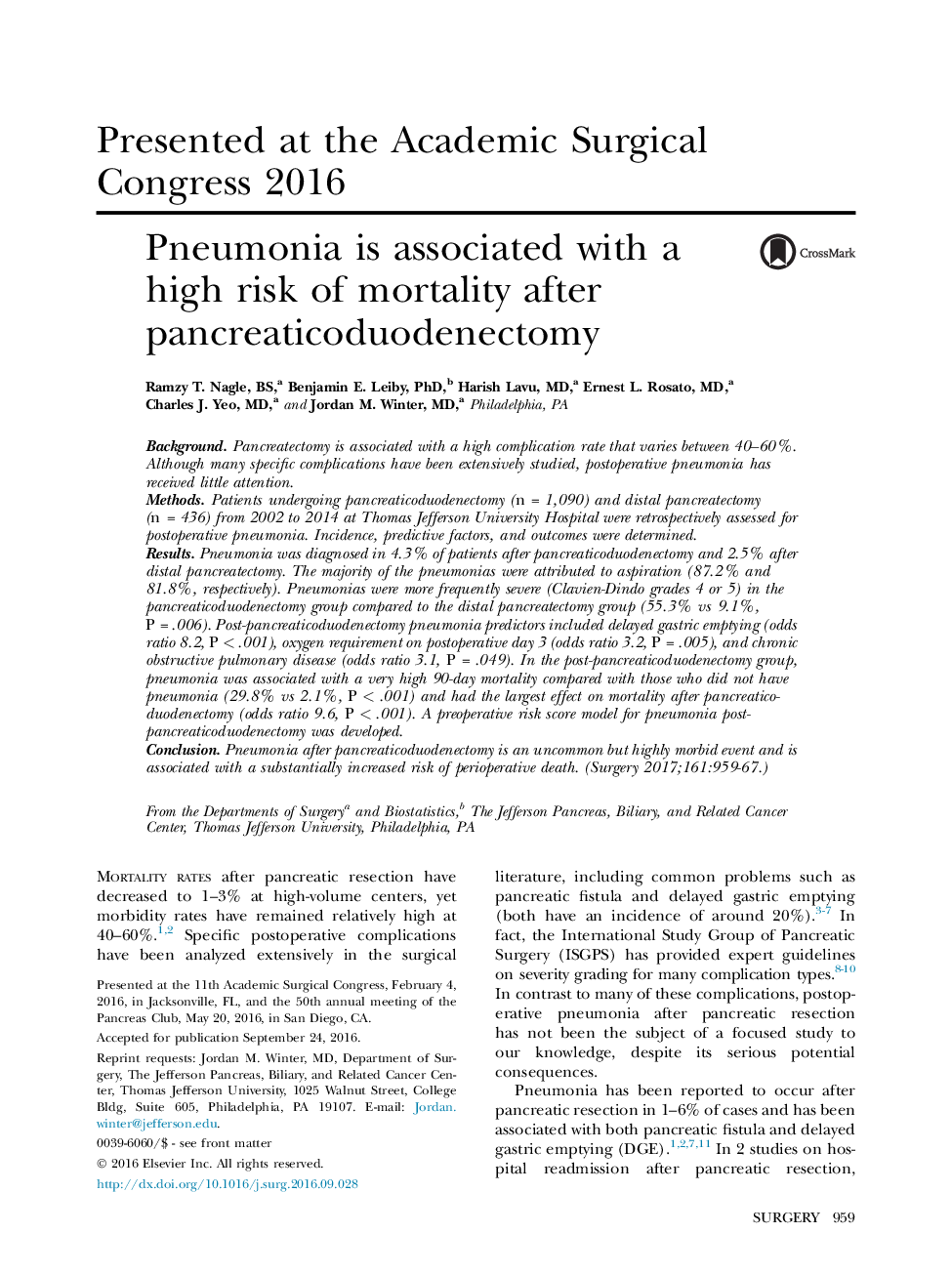| Article ID | Journal | Published Year | Pages | File Type |
|---|---|---|---|---|
| 5734644 | Surgery | 2017 | 9 Pages |
BackgroundPancreatectomy is associated with a high complication rate that varies between 40-60%. Although many specific complications have been extensively studied, postoperative pneumonia has received little attention.MethodsPatients undergoing pancreaticoduodenectomy (n = 1,090) and distal pancreatectomy (n = 436) from 2002 to 2014 at Thomas Jefferson University Hospital were retrospectively assessed for postoperative pneumonia. Incidence, predictive factors, and outcomes were determined.ResultsPneumonia was diagnosed in 4.3% of patients after pancreaticoduodenectomy and 2.5% after distal pancreatectomy. The majority of the pneumonias were attributed to aspiration (87.2% and 81.8%, respectively). Pneumonias were more frequently severe (Clavien-Dindo grades 4 or 5) in the pancreaticoduodenectomy group compared to the distal pancreatectomy group (55.3% vs 9.1%, P = .006). Post-pancreaticoduodenectomy pneumonia predictors included delayed gastric emptying (odds ratio 8.2, P < .001), oxygen requirement on postoperative day 3 (odds ratio 3.2, P = .005), and chronic obstructive pulmonary disease (odds ratio 3.1, P = .049). In the post-pancreaticoduodenectomy group, pneumonia was associated with a very high 90-day mortality compared with those who did not have pneumonia (29.8% vs 2.1%, P < .001) and had the largest effect on mortality after pancreaticoduodenectomy (odds ratio 9.6, P < .001). A preoperative risk score model for pneumonia post-pancreaticoduodenectomy was developed.ConclusionPneumonia after pancreaticoduodenectomy is an uncommon but highly morbid event and is associated with a substantially increased risk of perioperative death.
